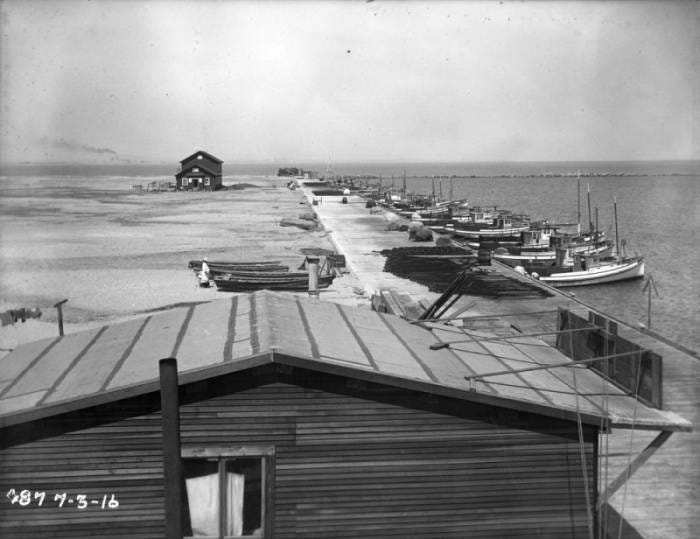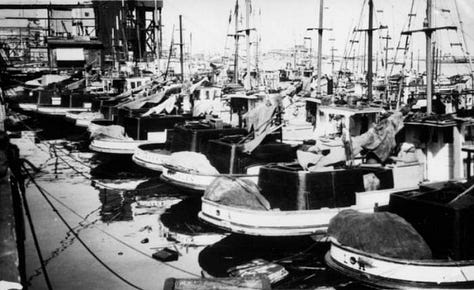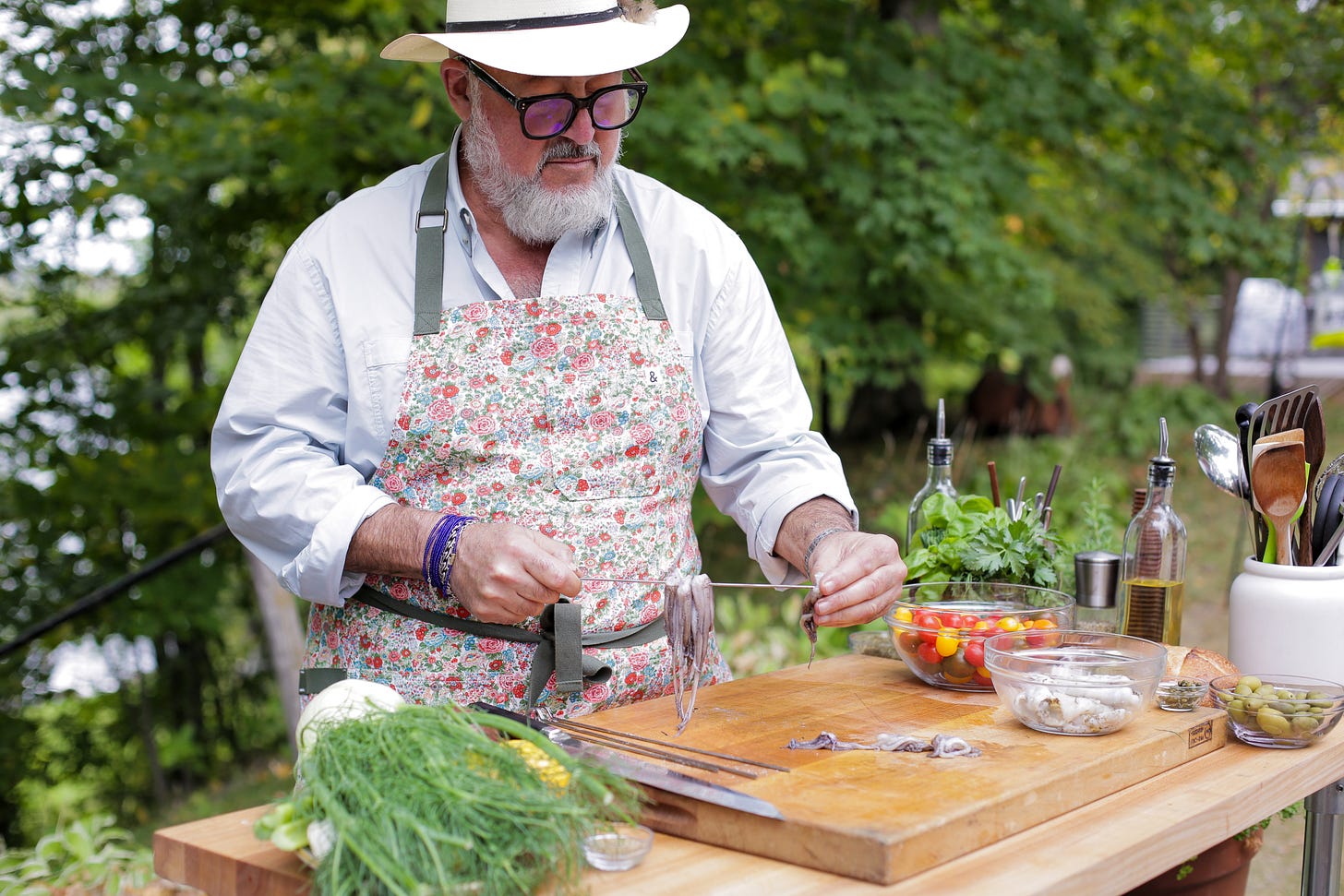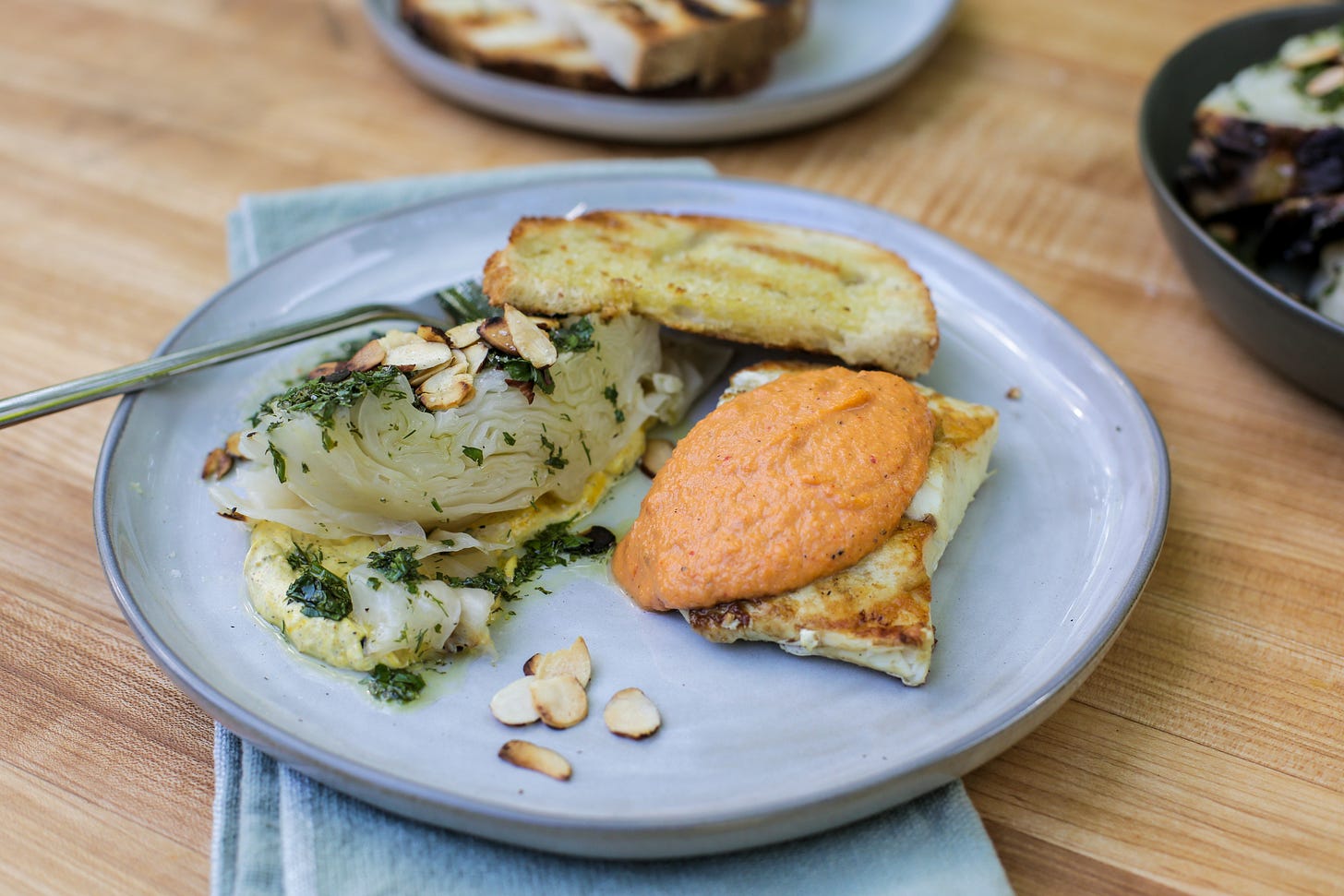Grilling Fish: Spilled Milk #344
The forgotten flatfish of the Golden Coast: California halibut’s quiet brilliance. I'm also getting into everything you need to successfully grill this delicate fish.
There’s no paywall on this recipe! If you aren’t a paying subscriber, this is a small taste of what you’re missing. For access to more Spilled Milk, click here to upgrade your subscription to paid.
California halibut is the fish equivalent of a Raymond Carver short story: understated, regional and frequently overshadowed by its louder, more operatic cousins. Though Alaskan halibut enjoys the PR equivalent of a Spielberg blockbuster — thick steaks on every menu, fisheries the size of Belgium and a brand that screams “sustainable luxury” — its slimmer, Southern kin swims quietly along California’s coastline, a local hero with barely a press agent to its name.
New episodes of Wild Game Kitchen premiere every night this week at 7:00 p.m. ET as part of Tastemade’s Grill Week.
Tune in and learn how to grill everything from squid to quail to wild boar. The show airs on the Tastemade Smokehouse channel on Pluto TV — or anywhere you stream TV for free.
But make no mistake, California halibut is a gem. Unlike its northern cousin, the Pacific (or Alaskan) halibut, which can grow to terrifying, mattress-like proportions and dwells in deep, frigid waters, the California version is a demure creature, maxing out at about 30 pounds. It’s a left-eyed flatfish, prone to a bit of whimsy (some individuals are right-eyed), and more inclined toward shallow inshore waters — especially bays, kelp beds and sandy bottoms from San Francisco to Baja. It doesn’t require deep-sea trawlers or an expeditionary force to catch; it’s the fish of skiff fishermen, spear divers and lucky surfcasters.


Historically, California halibut played an integral role in the economies of Monterey, Santa Barbara and San Pedro. They weren’t just fishing towns; they were operatic seascapes of immigrants and outlaws, Steinbeck characters and beat poets. Sardines and squid and halibut danced in the markets alongside gin-drunk tales of “the one that got away.” In the early 1900s, halibut were common in San Francisco’s bustling waterfront, where Italian fishermen offloaded their catches at Fisherman’s Wharf, the smell of diesel and salt thick in the fog.
Today, the fishery is modest by comparison — not industrial, but artisanal. You won’t see 300-foot factory ships chasing halibut off Santa Cruz. Instead, it’s a dayboat operation: hook-and-line, trammel nets and small quotas. That’s part of the charm, and the point. California halibut is a fish that comes with provenance, a kind of seafood terroir. It’s not a commodity; it’s a character actor.



So why does Alaska get the love? In short: size, scale and marketing. The Alaskan fishery is federally managed, high-volume and backed by a seafood lobby that could sell ice to an Athabascan in January. It’s also easy for chefs to use; firm, massive filets can take a sear, a poach or a pan-roast without falling apart. California halibut, by contrast, requires a bit more tenderness and respect. It’s more delicate, like a 1950s French film compared with the Marvel franchise.
Which brings us to the real culinary tightrope: grilling halibut.
The Lean, Clean, Flake-and-Fumble Challenge
Halibut is the white T-shirt of the fish world: clean, classic, impossible to keep pristine if you treat it carelessly. Mild, lean and low in fat, it lacks the oily insurance policy of salmon or mackerel. That means the grill, especially the wood-burning kind favored by show-offs and backyard purists like me, is both a high-wire act and a crucible of skill.
The problems are threefold:
Sticking: With no fat to lubricate the dance, halibut bonds to the grill like a needy co-dependent dude at an Only Fans convention.
Drying out: Blink, and your translucent filet has gone from juicy to jerky.
Flake-fail: It doesn’t just break; it shatters into clean white ruins the moment your spatula hesitates.
To grill halibut well is to understand restraint, timing and the importance of preparation — cleaning the grill, brushing with oil, heating the grill to a non-stick inferno, maybe even using a fish basket or cedar plank if you’re feeling fussy. The real miracle, though, is this: When you pull the fish off, you get one of the cleanest, most naturally sweet bites of the sea, kissed by smoke and crusted with caramelized Maillard joy.
In grilling circles, making halibut behave is like making soufflé rise at a punk rock concert: improbable, impressive and deeply satisfying. And if you follow my simple recipes for grilled halibut, the results will be flawless for you every time.
Below are two recipes, one for my roasted whole fish in a salt crust. It will thrill a crowd. The second is for grilled portions of halibut, along with some stunning sides. All are a celebration of Grill Week on Tastemade and the Season 5 premiere of Wild Game Kitchen.
Grilled Halibut with Whole Roasted Cabbage and Romesco
Serves 4
For the halibut:
4 pieces skinless halibut filet, about 6 ounces each
Olive oil
Salt
Romesco, for serving (recipe below)
Whole roasted cabbage, for serving (recipe below)
Labneh, for serving (recipe below)
Grilled bread, for serving
Prepare a grill for high direct-heat cooking. Filet your fish and season with salt and oil.
Clean and oil your grill grate with a neutral oil. Cook the filets over high direct heat. Grill the fish about 60 percent of the way on the first side, about 5 minutes, then flip and cook for about 3 more minutes. Transfer to plates and let rest.
For serving, cover the fish with a couple spoonfuls of romesco sauce. Spread the seasoned labneh next to the fish and lay the cabbage on the labneh.
For the cabbage:
1 whole cabbage
Oil
3/4 cup sliced almonds, toasted
1 tablespoon sugar
1/2 teaspoon salt
1 tablespoon lemon juice
1 tablespoon olive oil
1 tablespoon minced parsley
1 tablespoon minced dill
Prepare a grill to roast the cabbage in medium hot coals. Rub the whole cabbage head VERY lightly with oil and lay directly into the coals, covering the whole cabbage as best you can with the coals. Roast for about 45 to 50 minutes for a small head, about an hour for a medium one. Remove from coals and let rest for 10 minutes. Remove burnt outer leaves and slice the roasted central head.
Meanwhile, combine the sugar, salt, lemon juice, oil, parsley and dill. Drizzle this herb mix over the cabbage. Top with sliced almonds and serve over the labneh.
For the labneh:
1 cup labneh
One large pinch of saffron, steeped in 1 tablespoon hot water
1 clove garlic, grated
2 teaspoons ras el hanout
1 teaspoon cumin
Juice of 1/2 lemon
Salt and pepper
Place all the ingredients in a mixing bowl and stir to combine. Season with salt and pepper. Reserve.
For the romesco:
5 cloves garlic, sliced
2 shallots, chopped
1 red bell pepper, roasted and cleaned (no seeds or skin)
1 hot red chile (Fresno chiles work well) roasted and cleaned (no seeds or skin)
2 large ripe tomatoes, cut in half and de-seeded
1/4 cup red wine vinegar
1/2 cup olive oil (plus more for frying)
2 1/4-inch slices crusty peasant bread
1 handful of Marcona almonds
Salt and pepper
Heat just enough oil to cover the bottom of a small pan over medium heat. Add the garlic and shallots and fry until golden brown. Set aside.
Roast the bell pepper and Fresno chile directly in the coals, until charred and blackened on all sides. Remove the skin and seeds. Reserve.
Over high direct heat, grill the tomato halves, cut side up, until charred on the skin side. Reserve.
In a large bowl, combine the fried shallot and garlic, roasted pepper and chile, charred tomatoes, vinegar, olive oil and almonds. Using an immersion blender, puree until smooth. Alternatively, place everything in a traditional blender and puree until smooth. Season to taste with salt and pepper.
Salt Crusted Halibut with Sauce “Gagnaire” and Roasted Whole Cauliflower
Serves 6
For the halibut:
5 linear feet kombu, rehydrated in warm water
12 egg whites (about 2 cups)
12 cups kosher salt
1 whole California halibut, about 10 to 12 pounds
8 fresh rosemary sprigs
1 lemon, sliced
Whole Roasted Cauliflower, for serving (recipe below)
Sauce “Gagnaire,” for serving (recipe below)
Prepare a grill or fire pit to cook the halibut in a ring fire. I bake the entire fish in salt on a sheet tray in my fire pit, surrounded by coals.
Rehydrate several linear feet of kombu in a bucket of warm water for an hour, or until pliable and rehydrated. Drain and reserve.
In a large mixing bowl, combine the egg whites and salt.
Take a whole or half sheet tray large enough to hold the fish and line it with parchment paper. Wash and dry the fish very well. If you need to, cut the head and tail off of the fish so it fits on the sheet tray.
Place 4 rosemary sprigs underneath the fish and 4 rosemary sprigs on top. Top with lemon slices. Wrap the fish in the kombu.
Gently pack the salt and egg white mixture about ½-inch thick uniformly around the fish until it is completely covered. Lay it in the bottom of your grill, surrounded by coals. Place an oven thermometer next to the fish and maintain a temperature of about 400 degrees.
For a 10- to 13-pound fish, cook for about an hour; for a 15- to 20-pound fish, cook for about two hours.
Using a hammer or the back of a knife, gently crack the salt crust and remove. Remove the seaweed.
Carefully place a portion of fish on each plate and nestle some cauliflower next to it. Garnish with the sauce.
For the cauliflower:
1 medium head cauliflower
Olive oil
Salt
1 stick salted butter
12 sage leaves
3 tablespoons capers
Zest of 1 lemon
Rub the cauliflower with oil and season well with salt. Roast it, suspended over the coals in your grill or firepit, for 90 to 120 minutes, or until tender.
Meanwhile, melt the butter in a small saucepan and cook until nut brown. Add the sage leaves and cook briefly. Add the capers and remove from the heat. Stir in the lemon zest. Reserve.
Cut the cauliflower into florets and serve with the fish, drizzled with the browned butter and capers.
For the sauce:
2 tablespoons tomato paste
2 tablespoons Dijon mustard
1 cup white wine
1 cup cream
4 tablespoons butter
Juice of 1 lemon
In a saucepan, combine the tomato paste and mustard. Cook, stirring, until the mixture starts to darken. Pour in the wine and reduce to the consistency of a glaze, about 10 minutes, whisking frequently. Add the cream. Cook until rich and thickened. Off the heat, whisk in the butter. Season with salt, white pepper and lemon juice.







Have a Safe Fourth one and all...!